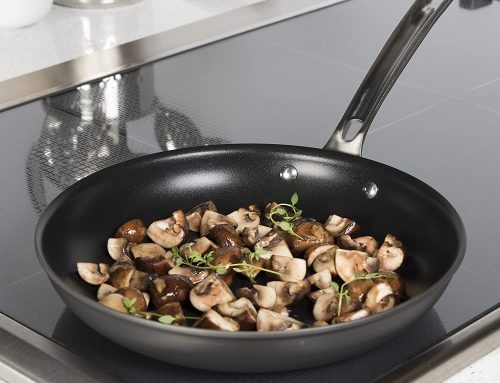Which pans are best for frying?
The best pans for frying are those with a flat, even surface and good heat conduction such as:
- Cast iron
- Stainless steel
- Aluminum
- Copper
- Non-stick (coated with materials such as Teflon)
It is important to choose a pan that is appropriate for the type of food being fried, as well as for the heat source being used. Frying is a popular cooking method that involves cooking food in hot oil until it is crispy and golden brown. Choosing the right pan for frying is essential to ensure that the food is cooked evenly and to prevent it from sticking to the pan. In this article, we will discuss the best pans for frying and what to look for when selecting a pan.

Details Introduction:
- Cast Iron: Cast iron pans are heavy, durable, and ideal for high-heat cooking. They are excellent for frying foods as they heat evenly and retain heat for a long time. Cast iron pans are also great for searing and browning, which makes them an excellent choice for frying steaks and other meats.
- Stainless Steel: Stainless steel pans are lightweight, easy to clean, and do not react with acidic foods. They are also ideal for high-heat cooking and distribute heat evenly, making them a good choice for frying foods. Stainless steel pans are also resistant to rust and are a good choice for those who are concerned about using cookware that is free of harmful chemicals.
- Aluminum: Aluminum pans are lightweight and heat quickly, making them a good choice for frying foods. They are also durable and do not react with acidic foods, which makes them a popular choice for frying. However, aluminum pans are not as durable as cast iron or stainless steel pans and may not last as long.
- Copper: Copper pans are highly conductive and heat quickly, making them ideal for frying foods. They also have a non-reactive surface, which makes them a good choice for frying acidic foods. Copper pans are also visually appealing and add a touch of elegance to any kitchen. However, copper pans are expensive and require regular maintenance to keep them looking their best.
- Non-Stick: Non-stick pans are coated with materials such as Teflon, which makes it easy to fry foods without them sticking to the pan. Non-stick pans are also easy to clean and are ideal for those who are looking for a low-maintenance option. However, non-stick pans are not as durable as other types of pans and may not be suitable for high-heat cooking.
In conclusion, the best pans for frying are those with a flat, even surface and good heat conduction. Cast iron, stainless steel, aluminum, copper, and non-stick pans are all good options for frying. The type of pan that is best for you will depend on your specific needs, such as durability, heat conduction, and maintenance requirements. When choosing a pan for frying, be sure to consider the type of food that you will be cooking and the heat source that you will be using.
Why is it called a frying pan?
A frying pan is called so because it is a type of kitchen cookware used primarily for frying food. The word “fry” means to cook food in hot oil, and a “pan” is a shallow, flat-bottomed cooking vessel. The combination of these two words describes the primary function of the item and its shape, making “frying pan” an appropriate name.
What is the difference between a skillet and a frying pan?
A skillet and a frying pan are similar kitchen cookware, but there are some differences between them:
- Shape: Skillets typically have sloping sides that are higher than those of a frying pan, making it easier to toss or turn the food. Frying pans, on the other hand, usually have straight sides that are lower in height.
- Size: Skillets are typically larger than frying pans and often come in a wider range of sizes.
- Material: Both skillets and frying pans can be made of a variety of materials, including cast iron, stainless steel, aluminum, and non-stick-coated materials.
In general, the terms “skillet” and “frying pan” can be used interchangeably, as they refer to similar types of cookware. However, the specific design and usage may vary slightly depending on the manufacturer.








